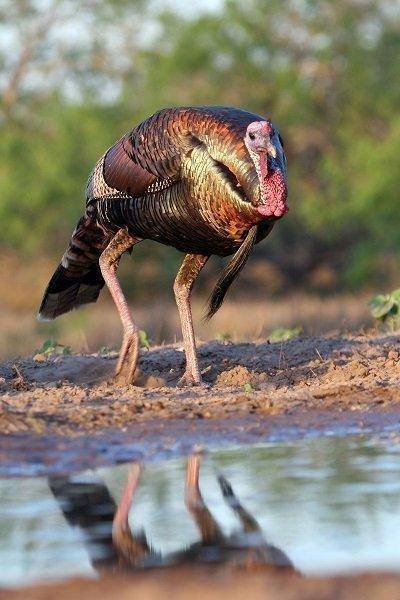Utah Division of Wildlife Resources Press Release
A chance to experience the thrill of hunting a strutting, gobbling tom turkey is almost here.
Utah’s general statewide turkey hunt starts April 25 for those 15 years of age or younger as of Jan. 23. On April 28, the hunt opens for all ages.
There is no limit on the number of permits that can be sold, so there should be no problem getting one. Permits can be purchased at www.wildlife.utah.gov. These are also available from more than 300 hunting license agents across Utah and at Utah Division of Wildlife Resources offices.
Tips and tactics to help hunters take a turkey are available at www.wildlife.utah.gov/hunting-in-utah/hunting-information/upland-game.html. A list of walk-in access hunting areas is also available on the webpage.
DWR Upland Game Coordinator Jason Robinson, says the general hunt offers advantages hunters won’t find during the limited entry hunt.
One advantage is better road conditions in the backcountry and better access. There is also more time and areas to hunt.
Robinson says it’s very important to hunt turkeys when the birds are gobbling. “That’s when the male turkeys, called toms, will be most receptive to a call,” he stated.
Unfortunately, weather in the spring can put a damper on turkey activity. “Wet and cold weather can decrease the period of time when turkeys are gobbling,” Robinson explained. “The limited entry hunt runs for only two weeks. The general hunt, on the other hand, runs for four weeks. Hunting during the general hunt doubles the amount of time hunters have to be in the field at the right time, when turkeys are gobbling.”
Robinson says two peak gobbling periods happen in the spring. The first usually happens in early April, when tom turkeys call aggressively at the start of the breeding season. The second peak happens during the general hunt in May. That is when toms are actively seeking hens that have not bred yet or that need to breed again because their nests failed.
While it might be hard to believe, an additional advantage is a feeling that fewer hunters are in the field. “Hunters consistently tell us they feel less crowded during the general hunt, even though more hunters are in the field,” Robinson says.
He thinks this feeling has a lot to do with perception. “If a hunter draws a limited entry permit, they might feel crowded, even if there’s just one other hunter in the area,” he indicated. “Hunters expect to see others in the field during the general hunt, and they don’t seem to mind as much.”
After a tough winter and spring a couple of years ago, Robinson says turkey numbers appear to be on the rise. In fact, turkey habitat in northern Utah has enough birds in it that DWR biologists moved extra birds to northeastern Utah this past winter, to start new populations.
In central and southwestern Utah, populations in certain parts of the regions were doing well enough last winter that biologists moved birds to other areas within the regions.
“Wild turkeys are doing really well in Utah,” Robinson says. “If the birds are in the right habitat, they will flourish.”
More information about hunting wild turkeys in Utah is available in the 2013- 2014 Utah Upland Game and Turkey Guidebook. The free guidebook is available at www.wildlife.utah.gov/guidebooks.

